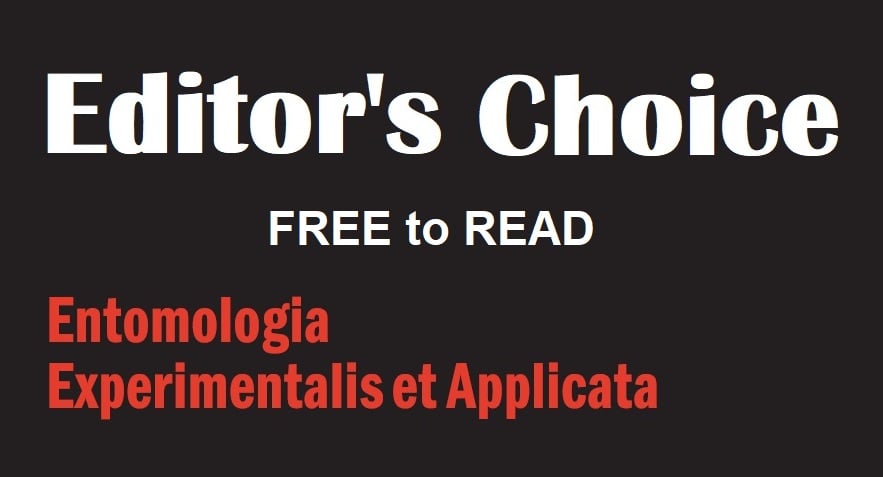Entomologia Experimentalis et Applicata
Journal list menu
Export Citations
Download PDFs
January 2024
Larval nutritional effects on male and female survival and fecundity in Anastrepha ludens
- First Published: 03 November 2023
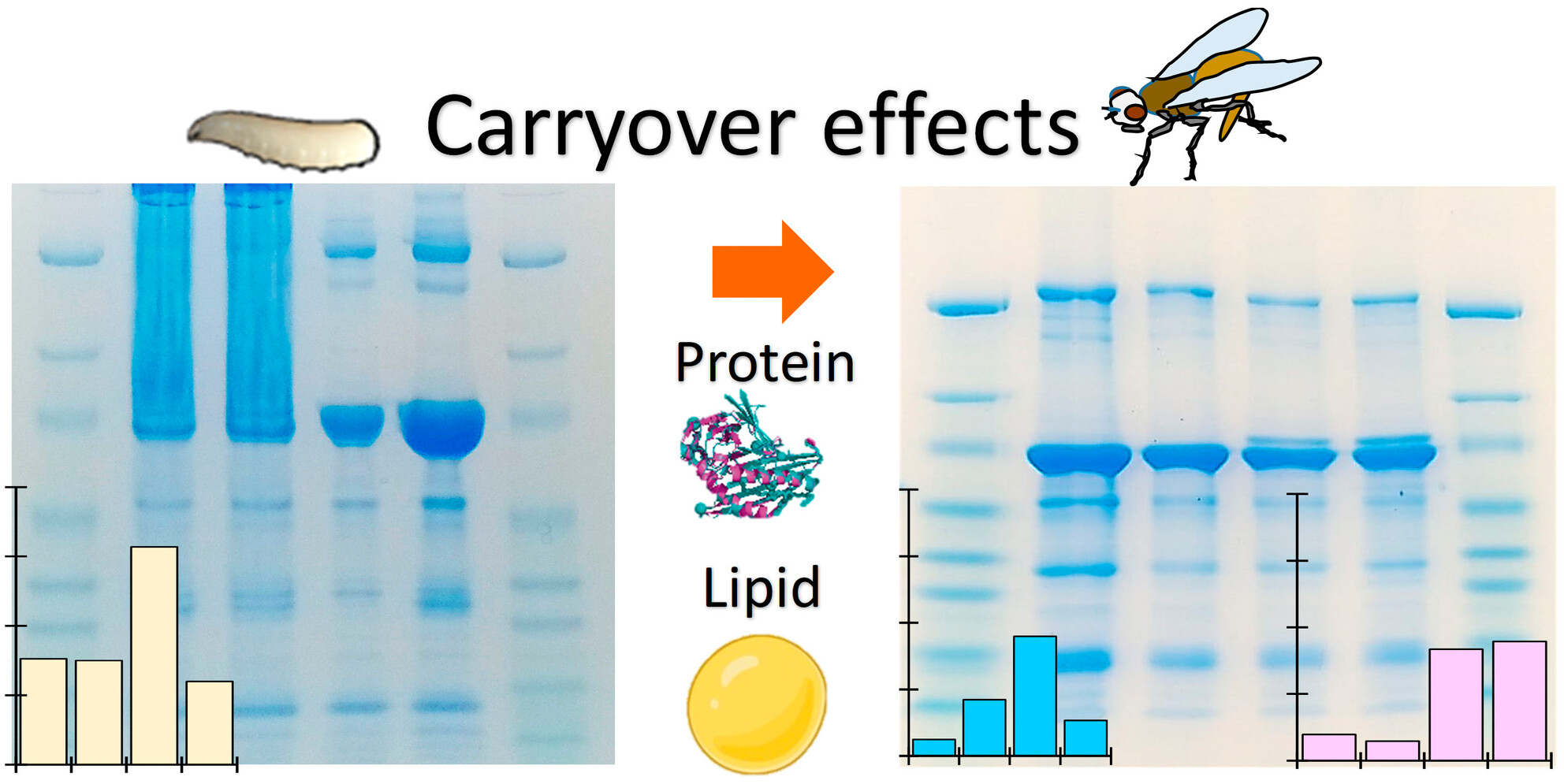
Could larval nutrition have a differential effect on female and male survival and fecundity? We investigated this by manipulating the protein:carbohydrate:lipid (P:C:L) ratio in diet environments. The concentration of macronutrients in the larval hemolymph indicates that the P:C:L ratio in the larval diet affects the assignment of macronutrients, and this effect is carried over to males and females differently. Interactions between lipids, carbohydrates, and proteins must be taken into consideration in the design and improvement of artificial diets.
November 2023
The reproductive tract of the black soldier fly (Hermetia illucens) is highly differentiated and suggests adaptations to sexual selection
- First Published: 07 August 2023
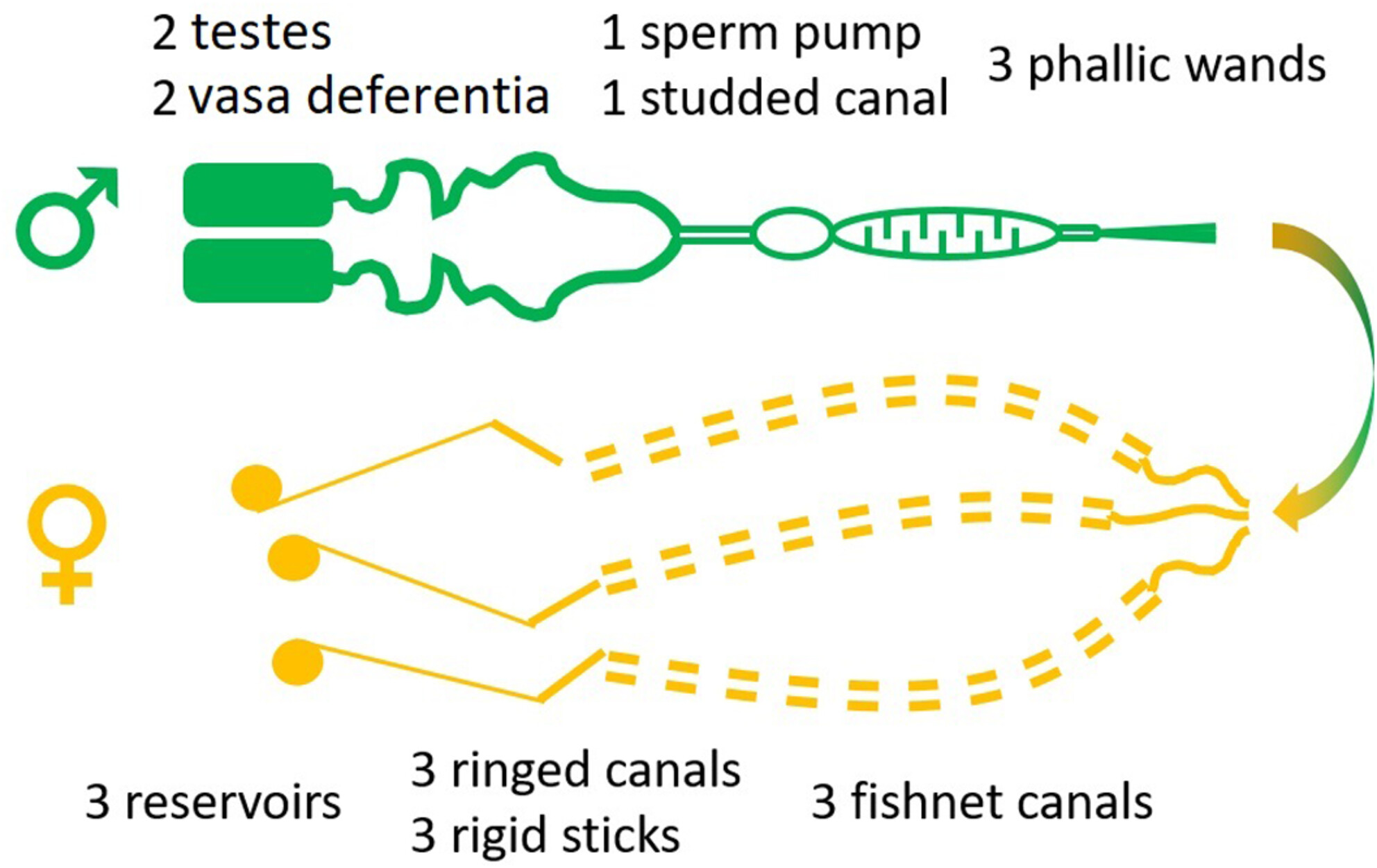
The anatomy of the reproductive tracts of males and females of the black soldier fly (Diptera: Stratiomyidae) reveals that organs producing, storing, and transferring spermatozoa are complex and highly specialized. Sperm are very long and tangled, and are transferred through three phallic ‘wands’ into the three spermathecae of females. Black soldier fly is of economic importance for bioconversion of wastes in feedstuff but also a model for the study of the evolutionary pressures on sperm as part of sexual selection.
October 2023
Artificial light at night has species-specific effects on oviposition behavior of mosquitoes
- First Published: 07 July 2023
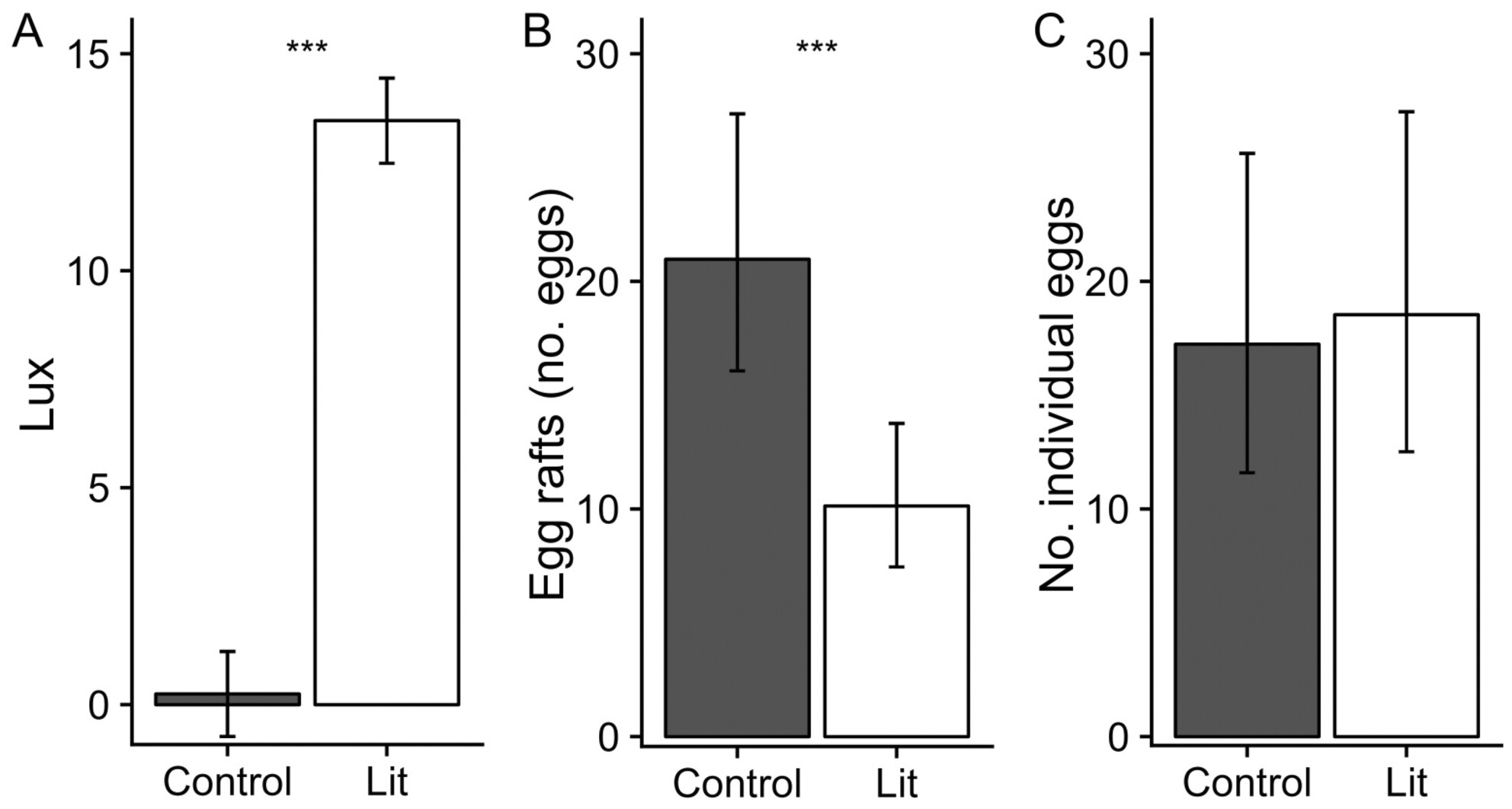
Artificial light at night (ALAN) is a pervasive and growing issue worldwide with widely observed effects on insects. In a field mesocosm experiment, we compared the oviposition response of natural populations of mosquitoes (Diptera: Culicidae) to either aquatic habitats exposed to light-emitting diodes or dark controls. Mean cumulative Culex restuans egg raft deposition was greater in control pools than in ALAN pools, but we observed no response of Ochlerotatus japonicus. Our results show that ALAN has species-specific effects on organisms.
September 2023
Influence of host larval weight of Anastrepha ludens on production parameters and quality attributes in the mass rearing of the parasitoid Diachasmimorpha longicaudata
- First Published: 12 June 2023
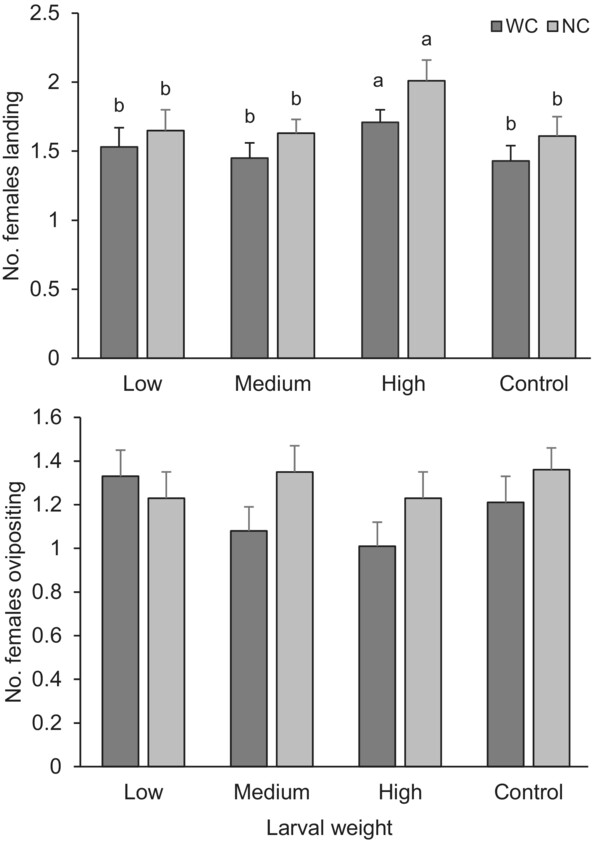
Anastrepha ludens (Diptera: Tephritidae) larvae are viable hosts for Diachasmimorpha longicaudata (Hymenoptera: Braconidae) and appear to be a good resource for its development. Three categories of larval weight were evaluated, indicating a direct relationship between host larval and parasitoid pupal weight, but no relationship with parasitoid adult emergence was observed. Host selection under field conditions demonstrated that parasitoids that developed in heavier larvae landed more frequently on infested fruit, but oviposition rates were similar between host larval weight categories.
August 2023
How hindgut microbiota may shape sympatric speciation in an invasive phytophagous scarab
- First Published: 29 April 2023

Following the introduction of new host plants, rapid evolutionary changes can result in sympatric speciation in invasive phytophagous insects. We examined the potential role of gut bacteria in this process by comparing two species of Costelytra scarabs (Coleoptera: Scarabaeidae, Melolonthinae), one non-invasive and one invasive. We found significant variation in bacterial assemblages between the invasive and the non-invasive species, with some bacteria potentially providing advantages in the exploitation of a new host plant, and thus possibly shaping invasion success.
July 2023
Flight muscle structure and flight capacity of females of the long-distance migratory armyworm, Spodoptera frugiperda: effect of aging and reproduction, and trade-offs between flight and fecundity
- First Published: 20 October 2022
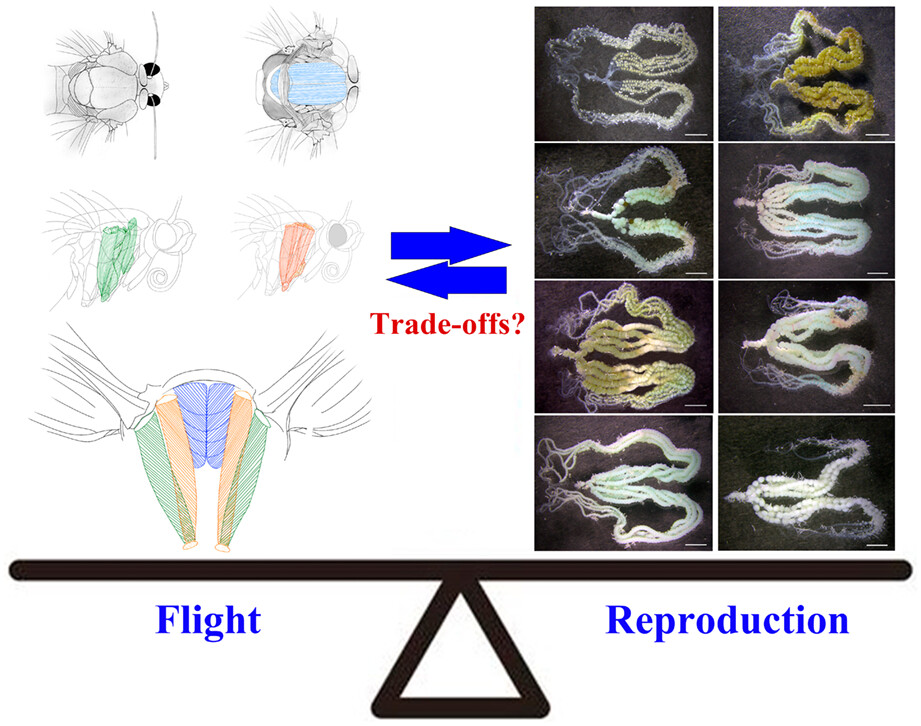
Insects in flight achieve the highest metabolism rates and wing beat frequency known in the animal kingdom, but how they do this is not fully understood. Here, we demonstrate the structure and arrangement of flight muscles in the thorax of Spodoptera frugiperda (Lepidoptera: Noctuidae). Flight muscle structure is related to flight function and affected by aging and reproduction. Female flight capacity is negatively correlated to fecundity. Mating is a switch of the trade-off between flight and reproduction.
June 2023
Footprints of the lady beetles Cryptolaemus montrouzieri and Tenuisvalvae notata affect their foraging behavior and predation rate
- First Published: 02 March 2023
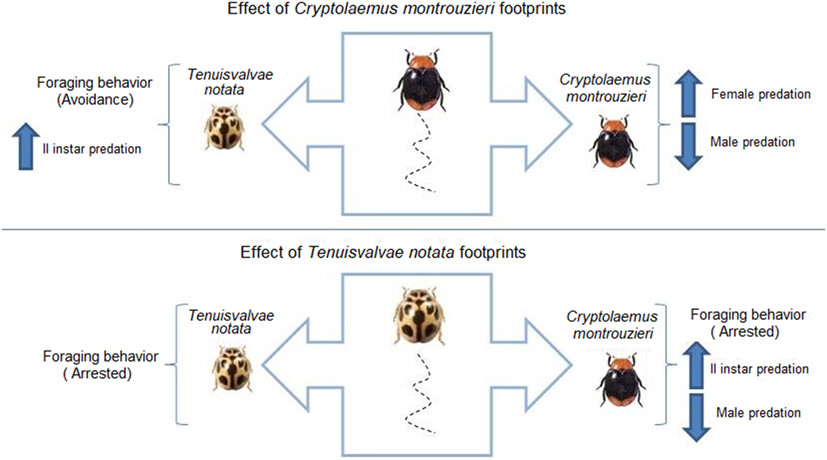
This study evaluates the effects of footprints of the lady beetles Tenuisvalvae notata and Cryptolaemus montrouzieri (Coleoptera: Coccinellidae) on their foraging behavior and predatory potential. The chemical composition of footprint extracts was species- and sex-specific. Tenuisvalvae notata females avoided areas treated with footprints of heterospecific females, whereas C. montrouzieri females were arrested on areas with footprints of T. notata females. Footprints of conspecifics and heterospecifics affected the predation rate of second instars for both species and of C. montrouzieri adults.
April 2023
Carbohydrate-rich diet increases critical thermal maximum in ants
- First Published: 10 January 2023
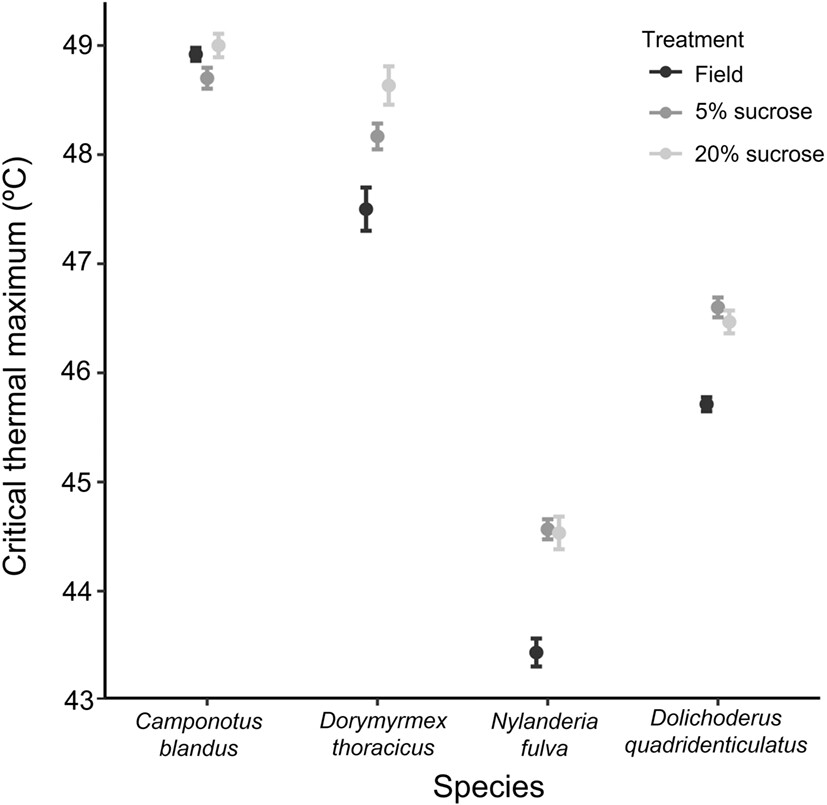
We experimentally analyzed the effects of carbohydrate levels on heat tolerance in several ant species (Hymenoptera: Formicidae). Heat tolerance was highest for ant species that forage at higher temperatures. We demonstrated that carbohydrate-rich diets can expand thermal (heat) tolerance, especially for ant species that forage at higher temperatures. Our results have relevant conservation implications, suggesting that changes in resource availability could mediate the effects of climate change on ant populations and, subsequently, the entire trophic network.
March 2023
Tomato plant defense induced by methyl jasmonate impacts on foraging behavior and parasitism of Trichogramma pretiosum
- First Published: 12 January 2023
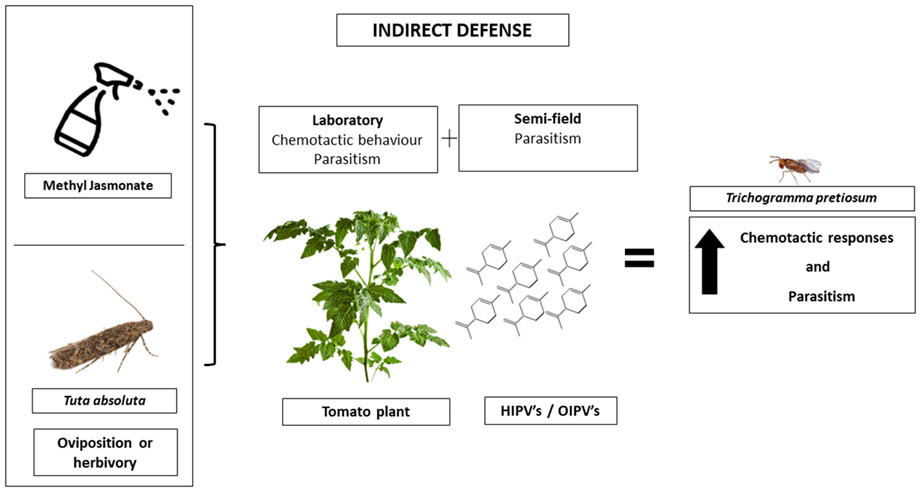
Indirect defense in plants is mediated by volatiles released into the environment, attracting natural enemies. Chemotactic behavior and parasitism were evaluated of Trichogramma pretiosum (Hymenoptera: Trichogrammatidae) on tomato plants induced by methyl jasmonate and Tuta absoluta (Lepidoptera: Gelichiidae) oviposition and herbivory. Methyl jasmonate on the host eggs did not affect chemotaxis and parasitism of the parasitoid. Yet, search behavior and parasitism were increased on plants induced by both methyl jasmonate and oviposition and herbivory of T. absoluta.
February 2023
Beetles on the move: Not-just-a-technical review of beetles' radio-tracking
- First Published: 08 December 2022
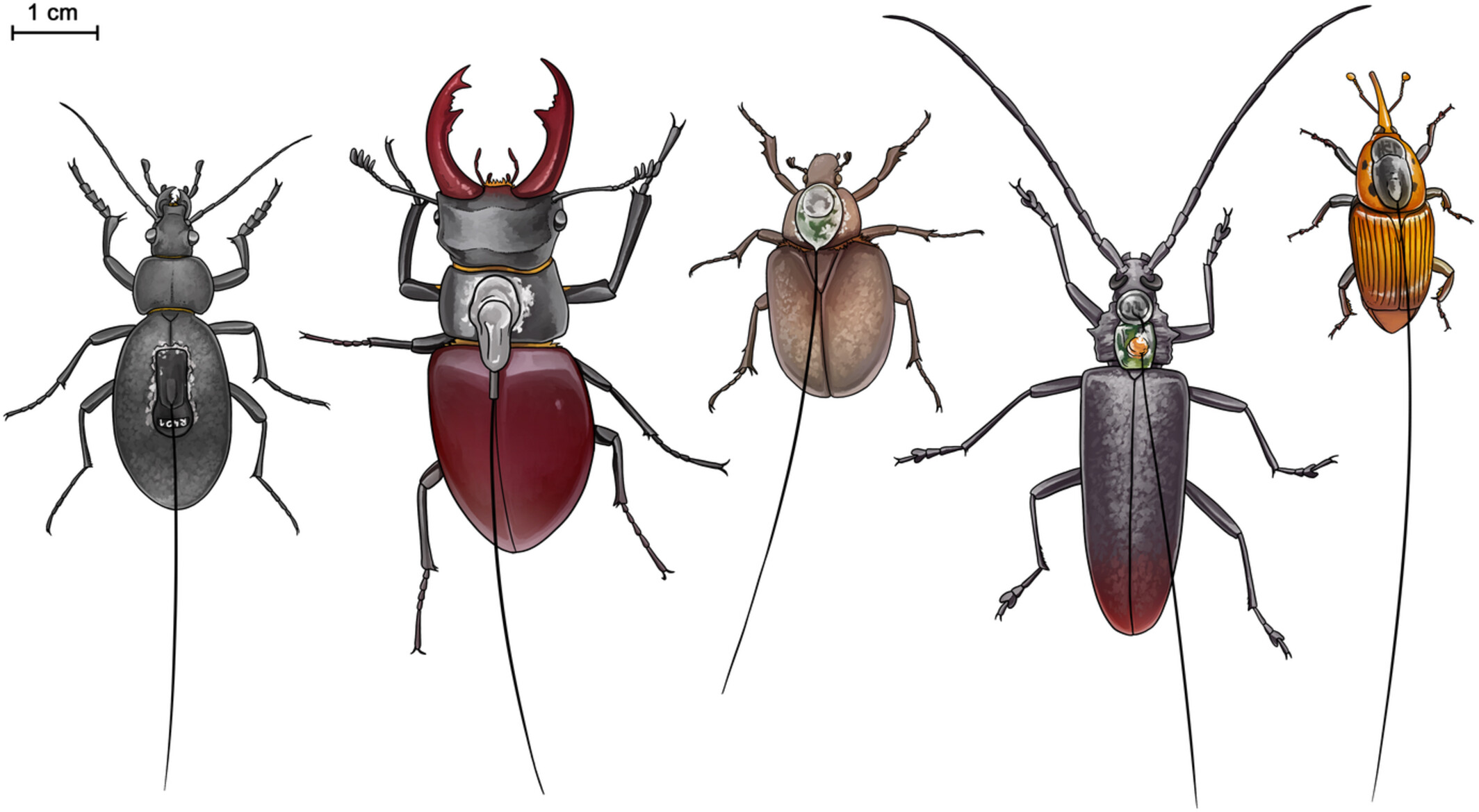
The ongoing miniaturization of radio transmitters together with the increasing popularity of beetles as a model group prompted us to develop a comprehensive narrative review. We discuss the most recent methodological advances and limitations toward the major perspectives in ecological application. We also identify the current knowledge gaps and suggest future research directions for radio-tracking.
January 2023
An omics evolutionary perspective on phytophagous insect–host plant interactions in Anastrepha obliqua: a review
- First Published: 10 October 2022
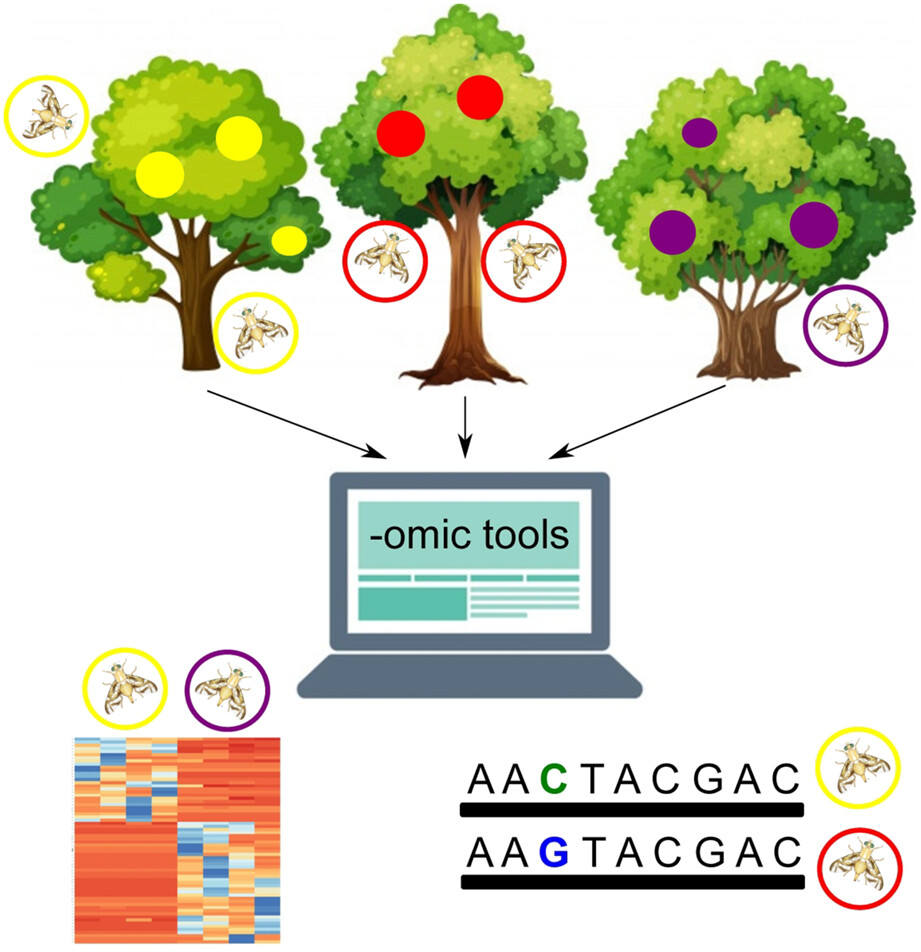
This review discusses the omics tools available to increase our understanding of the molecular mechanisms through which insects are able to use different host plants. Most studies on phytophagous insect–host plant interactions concern Holarctic species. Here, we focus on the Neotropical species West Indian fruit fly, Anastrepha obliqua (Diptera: Tephritidae). We review the species' adaptive molecular mechanisms, available omics tools, and the importance of a multidisciplinary approach to understand insect–plant interactions from an evolutionary perspective.
December 2022
Revisiting the hymenopteran diploid male vortex: a review of avoidance mechanisms and incidence
- First Published: 03 November 2022

The Hymenoptera (bees, ants, wasps, and sawflies) have haploid males and diploid females. According to the diploid male vortex (DMV) theory, inbreeding increases sterile diploid male production and extinction risk for many species. We reviewed DMV incidence and avoidance. We found that many species avoid DMV via inbreeding avoidance and diploid male mortality or mating failure. We conclude that even for populations with low genetic diversity (e.g., endangered species, biological control), the DMV requires highly specific circumstances.
November 2022
Seasonality, body size, and maturation time in the neotropical grasshopper Sphenarium histrio across an altitudinal gradient
- First Published: 06 September 2022
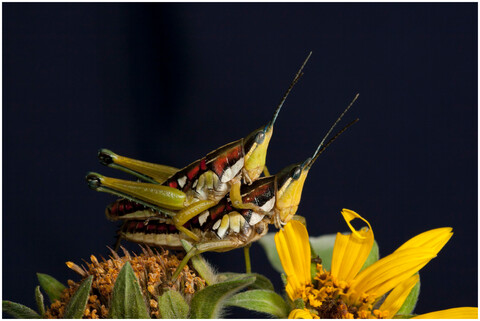
We analyzed the body size and maturation time of the grasshopper Sphenarium histrio (Orthoptera: Pyrgomorphidae) in three localities from an altitudinal gradient in southern Mexico. Due to climatic differences, males and females from high altitude were smaller, hatched earlier, had shorter development times, and fewer instars than the other grasshoppers. Males developed and grew faster than females, suggesting protandry. Females from the low and high altitudes had the highest and lowest growth rates, respectively.
October 2022
Parasitoid venom alters the lipid composition and development of microorganisms on the wax moth cuticle
- First Published: 03 August 2022
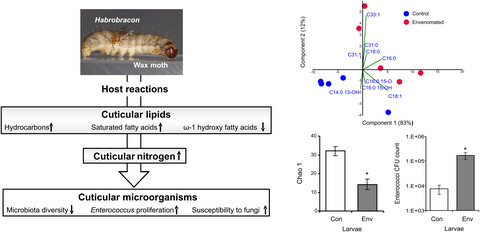
In response to parasitoid venoms, biochemical and microbiological changes occur on insect host cuticles. We showed that envenomation of wax moth larvae, Galleria mellonella (Lepidoptera: Pyralidae), by ectoparasitoid Habrobracon brevicornis (Hymenoptera: Braconidae) causes epicuticular hyperlipidemia and alterations in the fatty acid composition, which accompanied restructuring of the epicuticular microbiota, increased proliferation of enterococci, and increased susceptibility of larvae to entomopathogenic fungi. We propose that changes in the development of microorganisms are triggered by a shift in epicuticular lipid composition.
September 2022
Biocontrol implications of multiparasitism by Trissolcus mitsukurii and Trissolcus japonicus on the invasive brown marmorated stink bug
- First Published: 26 April 2022
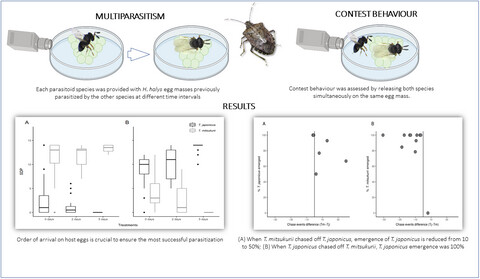
Halyomorpha halys (Heteroptera: Pentatomidae) is an invasive pest of crops. Adventive populations of its egg parasitoids Trissolcus japonicus and T. mitsukurii (Hymenoptera: Scelionidae) are spreading across northern Italy. Trissolcus japonicus was selected for an Italian biocontrol program against H. halys. Multiparasitism experiments indicate that the order of arrival on the host's eggs is crucial to ensure the most successful parasitization and that competition between the two species did not result in reduced H. halys egg mortality in the laboratory.
August 2022
Using biological invasions to improve plant defense theory
- First Published: 02 June 2022
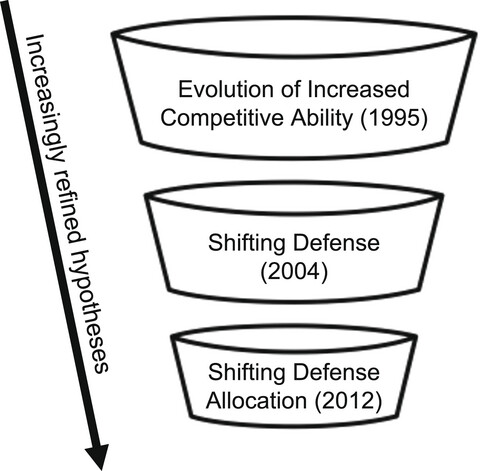
We use an invasive plant, Verbascum thapsus (Scrophulariaceae), to evaluate the power of three cornerstone hypotheses to accurately predict the evolution of defense against herbivorous insects, and argue that V. thapsus is a model system for testing plant defense theory more broadly. We find that the hypothesis that integrates predictions of within-plant optimal defense theory and the evolutionary dilemma model provides strong insights into invasion and evolution of plant defense. We close by highlighting future directions of inquiry in plant invasions.
June 2022
Lack of lipid accumulation in two species of chalcidoid wasps with secondarily evolved phytophagy
- First Published: 19 March 2022

The majority of parasitoids phenotypically lack lipid accumulation as adults. There are repeated reversals from parasitoid to phytophagous lifestyle. Seed-feeding wasps originated several times; they feed on seeds as larvae but have free-living adults like their ancestors. We tested two species of seed-feeding wasps from independent lineages: Megastigmus aculeatus and Bruchophagus platypterus (Hymenoptera: Chalcidoidea: Torymidae, Eurytomidae). Adults of both species did not accumulate lipids. Thus, secondary loss of the parasitic lifestyle does not concur with a regain of lipid accumulation.
May 2022
A 30-year systematic review reveals success in tephritid fruit fly biological control research
- First Published: 17 February 2022
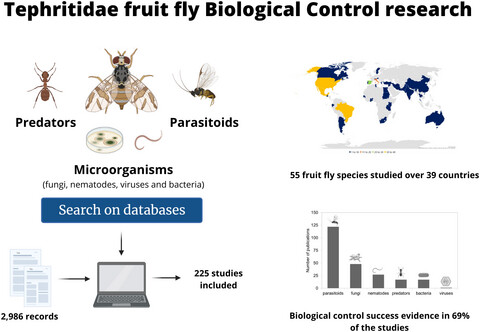
We conducted a review to investigate publications assessing the success or failure of the use of natural enemies against tephritid fruit flies. We compiled and summarized information from over 30 years of research on biological control efforts. The most-studied biocontrol agents for the suppression of fruit flies were parasitoids, fungi, and nematodes. Natural/conservation biological control was the main scope studied; however, augmentative biological control had a higher rate of successful studies and potential success, followed by classical biological control.
April 2022
Evolutionary neuroecology of olfactory-mediated sexual communication and host specialization in Drosophila – a review
- First Published: 28 January 2022
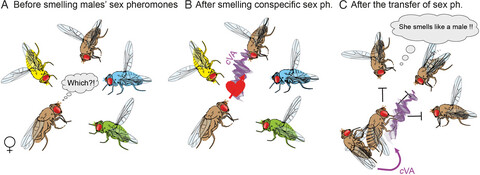
Drosophilid flies (Diptera) rely on sex pheromones, as well as on non-pheromonal chemicals such as host volatiles, as honest signals for pre-mating reproductive isolation, to guide and restrict their search for conspecific mates within limited locations. A subtle divergence in the perception of these signals can lead to accumulated changes among populations of the same species and, ultimately, to reproductive isolation. In this review, we shed light onto the evolutionary changes of the neural circuits that underlie mate recognition.
March 2022
Ecological trade-offs in development and defence in a specialist moth when feeding on four congeneric host plants
- First Published: 19 December 2021
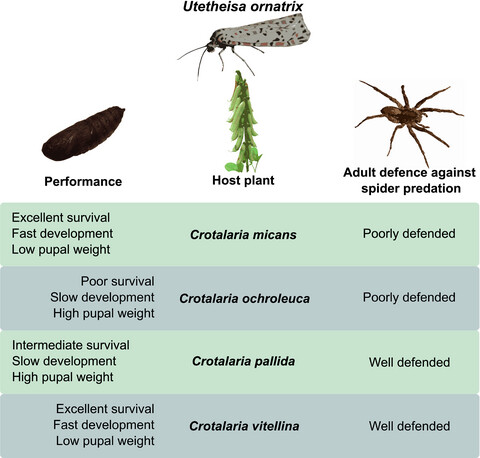
Utetheisa ornatrix (Lepidoptera: Erebidae) can feed on various plants in the genus Crotalaria (Fabaceae). I tested how four congeneric plants affect development and defence in the moth. I found that various aspects of development trade off with each other, as well as with defence against spider predation. These trade-offs could maintain multiple plant use by U. ornatrix. I also showed that pod boring by U. ornatrix has a physiological cost but gives the moth a large benefit in defence.




